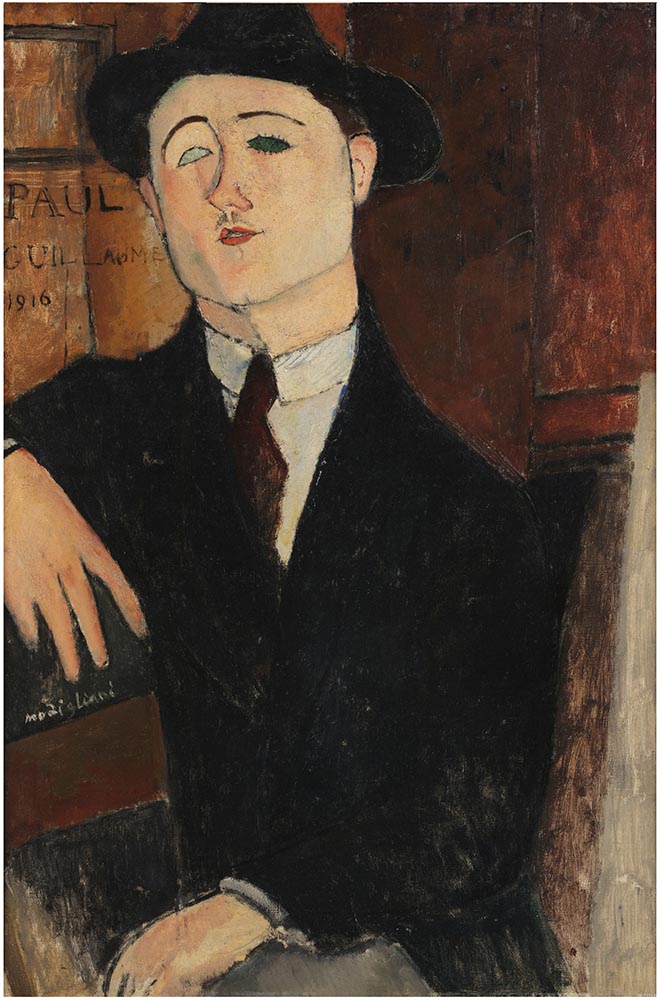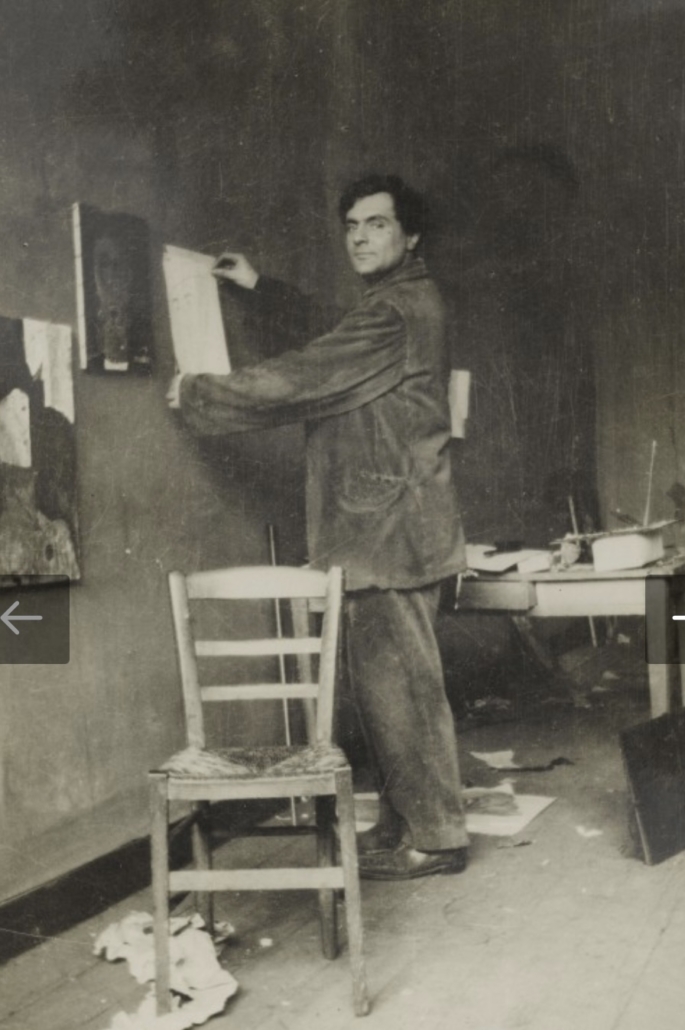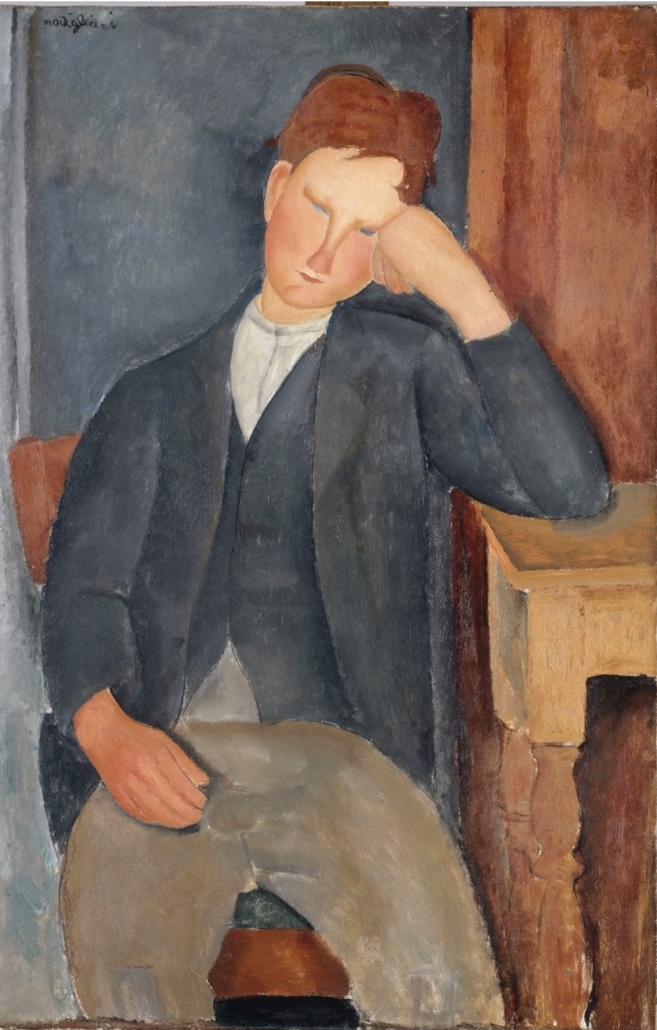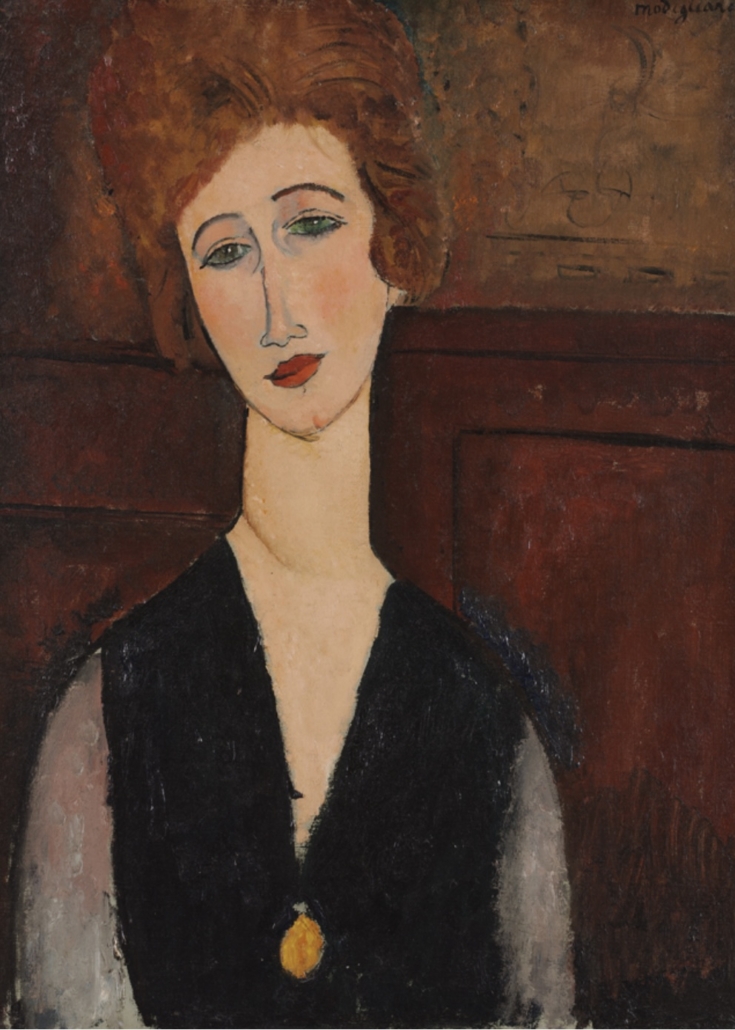Amedeo Modigliani
A painter and his art dealer

Nearly a century after the meeting between the two men in 1914, this exhibition aims to return to one of the emblematic moments in the life of Amedeo Modigliani, the one when Paul Guillaume became his dealer. It will seek to explore the way in which the links between the two characters can shed light on the artist’s career.
When he arrived in Paris in 1906, Modigliani, a Jewish artist of Italian origin, was a painter. His meeting with Constantin Brancusi, a sculptor of Romanian origin, in 1909, acted as a revelation for him: he was introduced to sculpture and devoted himself to it almost exclusively until 1914. His break with this practice was as sudden as total: from 1914 to his death in 1920, he returned to painting and produced numerous paintings devoted mainly to the human figure alone. It is this practice of painting which is at the heart of the relationship between the artist and the dealer. Paul Guillaume encouraged him, rented him a studio in Montmartre, and made his paintings known in Parisian artistic and literary circles. He buys, sells and collects his works.

It was through the poet Max Jacob (1876-1944) that the young gallery owner and collector Paul Guillaume discovered Modigliani in 1914. He then probably became his dealer, as we understand when reading the correspondence between Paul Guillaume and his mentor, the poet and art critic Guillaume Apollinaire (1880-1918) then at the front. It is in this Parisian context that Modigliani immortalized his gallery owner in a series of painted and drawn portraits that have remained famous: he produced no less than four between 1915 and 1916. The first of them, kept at the Musée de l’Orangerie, proclaims the privileged relationship between the dealer and the artist. Guillaume, who was only twenty-three years old at the time, is depicted in a suit, gloves and tie as a visionary avant-garde pilot, overlooking the words “Novo Pilota”. This inscription lets us see that the gallery owner arouses great hope in the painter. Guillaume, through his stories, also gives us the portrait of a more intimate Modigliani with whom he shares artistic and literary affinities. Their common interest in African art is obvious. Both men are equally sensitive to literature and poetry. Guillaume thus remembers that Modigliani “loved and judged poetry, not in the cold and incomplete manner of a professor, but with a soul mysteriously gifted for sensitive and adventurous things. »

In addition to the five paintings by Modigliani kept today at the Musée de l’Orangerie, more than a hundred canvases as well as around fifty drawings and around ten sculptures by the artist are said to have passed through the hands of the dealer. This number denotes both the gallery owner’s involvement in promoting the artist but also his personal taste for his works, largely present on the walls of his various apartments. There are portraits of the notable figures of Paris of the time, Max Jacob, André Rouveyre, Jean Cocteau, Moïse Kisling, but also unknown models, as well as very beautiful sets of portraits of the women who shared the painter’s life. , the writer Béatrice Hastings first of all, then the young painter Jeanne Hébuterne, his last companion and the mother of his child.

The exhibition thus evokes, through the choice of emblematic works, the different characteristics of this corpus while exploring the links between the painter and his dealer in the Parisian artistic and literary context of the 1910s as well as the role of Paul Guillaume in the diffusion of Modigliani’s work on the art market in both France and the United States in the 1920’s.


